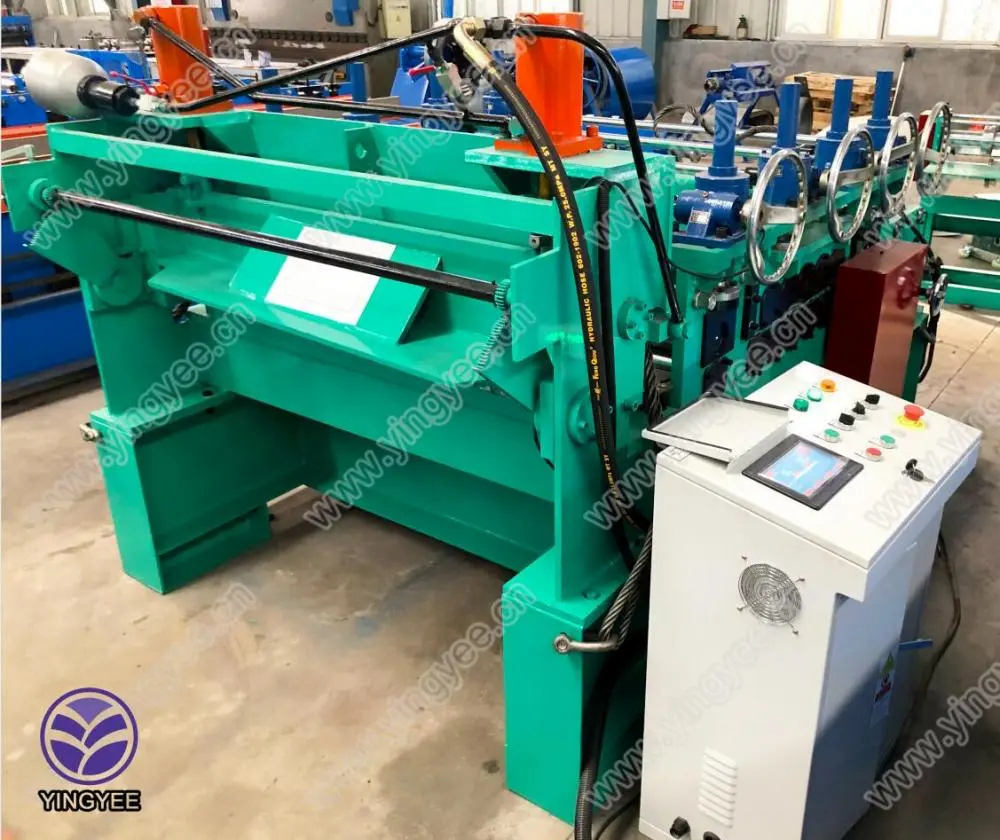
Advancements in Drywall Roll Forming Technology The 70m/min Speed with 4 Punching Stations
In the modern construction industry, efficiency and precision are paramount. One of the pivotal innovations in this sector is the drywall roll forming machine, particularly those capable of operating at impressive speeds like 70 meters per minute, coupled with multiple punching stations. This technological advancement is revolutionizing how drywall products are manufactured, ensuring quality while significantly enhancing production capabilities.
The Basics of Drywall Roll Forming
At its core, drywall roll forming involves taking large rolls of steel or other materials and shaping them into specific profiles used for drywall applications. The process is a continuous method where the material is fed through a series of rollers that shape it into the desired form. Punching stations, which create holes or cutouts in the material, are essential for the subsequent installation processes, providing functionality and versatility to the finished products.
Unmatched Speed and Efficiency
A drywall roll forming machine operating at 70 meters per minute represents a leap forward in manufacturing speed. Traditional methods often involve slower production rates, which can be a bottleneck in construction projects. The high-speed operation not only increases output but also significantly reduces the labor costs associated with prolonged manufacturing processes. With a machine capable of such speed, manufacturers can meet high demand while maintaining a streamlined workflow, enabling projects to progress without the delays often caused by supply shortages.
The Role of Multiple Punching Stations

Equipping drywall roll forming machines with four punching stations further enhances their versatility. Each station can simultaneously create different cutouts, allowing manufacturers to produce a variety of profiles tailored to specific needs without the need for multiple machines or lengthy changeovers. This multi-functionality is particularly beneficial in projects requiring customized wall systems, as it allows for the efficient integration of electrical boxes, plumbing lines, and other essential infrastructure directly into the drywall panels during the forming process.
Improved Precision and Quality
Beyond speed, modern drywall roll forming machines boast advanced technology that ensures high precision in production. The integration of computer numerical control (CNC) systems allows for meticulous alignment and adjustments, which are crucial for creating uniform products. With a high-speed machine operating at 70m/min, combined with reliable punching mechanisms, manufacturers can achieve tighter tolerances and enhance the overall quality of the finished drywall panels. This not only results in a better end product but also reduces waste, as accurately made materials require less rework or scrapping.
Cost-Effectiveness and Scalability
The benefits of speed and efficiency with advanced drywall roll forming machines translate into significant cost savings for manufacturers. Faster production times mean that less labor is required per unit of output, allowing companies to allocate resources more strategically. Additionally, the scalability of these machines means that as demand increases, manufacturers can simply ramp up production without overhauling their existing systems. This ability to scale operations efficiently is a critical advantage in the competitive construction market where timelines and budgets can become increasingly tight.
Conclusion
In conclusion, the introduction of high-speed drywall roll forming machines, particularly those operating at 70m/min with four punching stations, represents a significant advancement in construction technology. These machines not only improve manufacturing speed and reduce costs but also guarantee precision and high-quality outputs. As the construction industry continues to evolve, embracing such innovations will be essential for manufacturers looking to remain competitive while meeting the demands of modern building practices. The future of drywall production is undoubtedly bright, promising faster, more efficient, and more versatile solutions that will shape the spaces we inhabit.